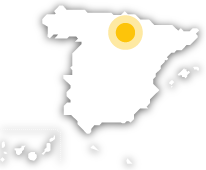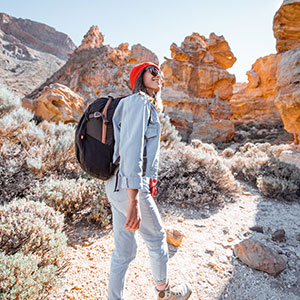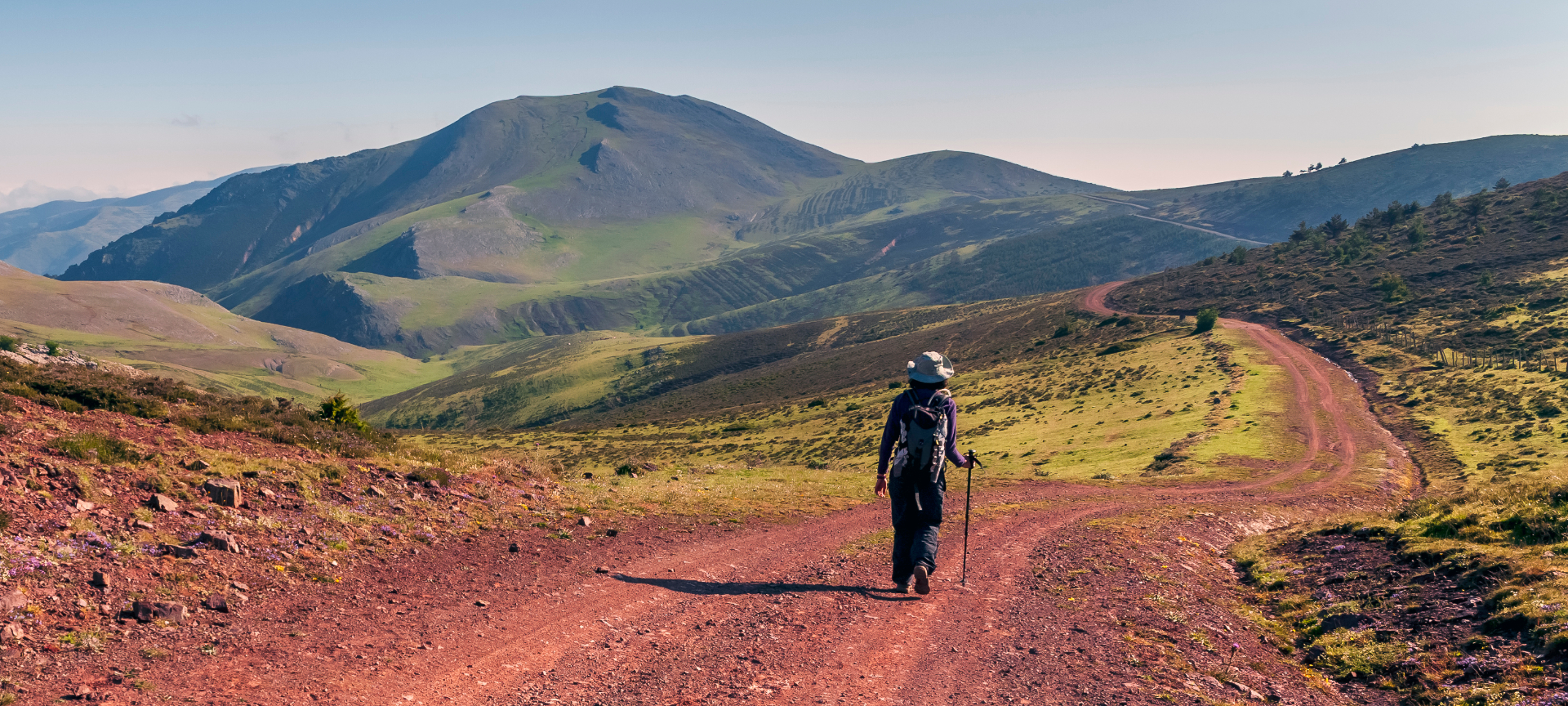
La Rioja is synonymous with good wine. That's why you'll love tasting its famous wines or taking a tour of its wineries. In addition, this part of Spain is also known for its landscapes, for its monuments relating to the origins of the Castilian Spanish language, for being the "land of dinosaurs", for its streets full of tapas restaurants, for its spas, and for its countless charming villages. Whether you are travelling alone or with your family, in La Rioja you will find something for you. Moreover, being a small region, it is very easy to cover the whole of it.
Debe activar Javascript para poder utilizar este servicio
-

Seek out the origins of a language: Suso and Yuso Monasteries
The first stop you can make is in the village of San Millán de la Cogolla, under the peaks of Mount San Lorenzo, the highest mountain in La Rioja (2,262 metres). Here you will find the Yuso and Suso Monasteries, which have been declared World Heritage Sites.San Millán — Saint Emilian — was a hermit who settled where the Monastery of Suso now stands. The altar where he held Mass, one of the oldest in Spain, is still preserved, and the first texts in Spanish were written here. In the Middle Ages important manuscripts were produced there. The site is surrounded by nature, and there is a tourist bus service to travel there, which must be booked in advance on +34941373082 or at the office on the ground floor of the Yuso Monastery.The Yuso Monastery - the "lower one" - is larger and was built to enlarge the Suso Monastery in the 11th century. Its impressive library holds a large part of the history of Castilian Spanish and has more than 10,000 volumes, including very valuable editions.
-
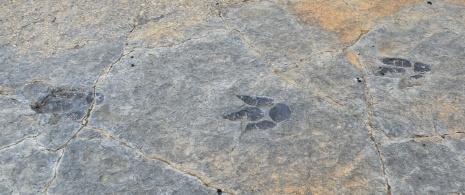
Following in the footsteps of dinosaurs
More than 120 million years ago, dinosaurs inhabited what is now La Rioja. In fact, this area of Spain is one of the places with the most dinosaur ichnites (fossil footprints) in the world. There are around 140 sites in 20 municipalities. Especially if you are travelling with your family, a fun option is to travel the “Dinosaur Route”, which passes through different sites where you can discover thousands of footprints. You will also see life-size reproductions of these animals, and curiosities such as a 27-metre long Iguanodon footprint, the longest herbivore print in La Rioja.Don't miss Barranco Perdido, a paleo-adventure park in Enciso, which also has a Cretaceous Museum, a Cretaceous beach, a palaeontological circuit and a multi-adventure circuit. And the Paleontological Interpretation Centre of La Rioja in Igea is another must-see. You can play at being explorers and learn a lot together.
-
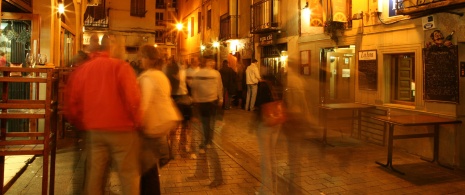
Visiting Logroño and going for tapas in Calle Laurel
Logroño is the capital of La Rioja, and it is well worth spending at least a day and a night in this city crossed by the river Ebro. Stroll along Paseo del Espolón promenade, take a look at its churches and its medieval and Renaissance houses, visit the Co-cathedral of Santa María de la Redonda or the Revellín gate and arch in the city walls.In the afternoon, you can relax in Ebro Park and at sunset go to the beautiful Puente de Piedra (Stone Bridge). In the evening, it's time to go to the liveliest area of the city, Calle Laurel, one of the most famous streets to enjoy tapas bars in Spain, where every bar has a speciality food and a Rioja wine to go with it. For example, the "champi" at Bar Soriano, the patatas bravas at Bar Jubera or the mushrooms at Bar Cid. Other nearby streets, such as Albornoz and San Agustín, are also popular for a drink.To get there, Logroño has a small airport 14 kilometres from the centre and is connected by train and bus to different parts of Spain.
-

Stargazing in a Starlight Tourist Destination
Since 2012, the Valles del Leza, Jubera, Cidacos and Alhama Biosphere Reserve has been recognised as a Starlight Tourist Destination. What does this mean? That it is one of the best areas in Spain for stargazing thanks to its distance from large population centres, its terrain and its climate. What also makes it special is that it has several incredible places from which to view the sky. For example, the archaeological site of Contrebia Leucade in Aguilar del Río Alhama to discover the myths of Celtiberian culture under the stars. Or the dolmen of Collado del Mayo in Trevijano, the sinkholes of Zenzano, or Luna Castle in Cornago. You will enjoy the night and the silence of the abandoned villages.This area also organises the "Starry Nights" programme, usually in the summer months, which provides guided observations.
-
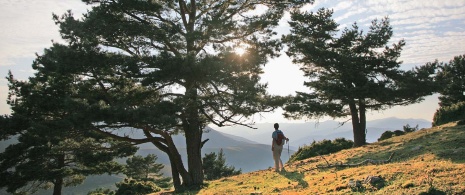
Enjoying rural tourism in its natural spaces
In addition to the Biosphere Reserve, La Rioja has various natural spaces. For example, the Lagunas de Urbión, lakes of glacial origin; or Los Sotos de Alfaro Nature Reserve, which has hundreds of storks, especially from early spring. Or Sierra Cebollera Natural Park with its curious open-air Sculpture Park and several peaks over 2,000 metres high.And how about visiting beautiful villages, such as Ezcaray and Cornago? It is well worth booking rural accommodation in any of these areas. There are many types. For example, old wine cellars that have been restored as rural guest houses, beautiful manor houses, buildings with centuries of history that now have all the comforts...
-
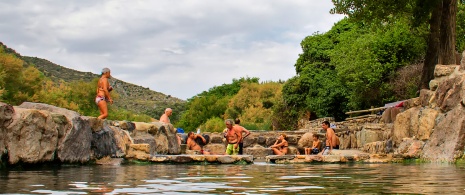
Unwind in its thermal spas
After so much planning, your body also deserves a rest. And what better place to give it a rest than in one of the two great spas in La Rioja.On the one hand, the Arnedillo spa, whose origins date back to Roman times. In fact, it has a Roman thermal bath, but also a wave pool and an outdoor hot springs park that takes advantage of the hot mineral and medicinal waters. You can also apply thermal mud, a treatment that has made the spa famous, as it is the only one in Spain that still carries out the process of maturing the mud in a natural way. On the other hand, there is the spa in Grávalos, with spectacular views over the valley, built over a spring of medicinal mineral waters that were also used by the Romans. In fact, it has a Roman-Irish trail. And in honour of the famous wines of La Rioja, you can try their hydroenological experience: an invigorating massage, accompanied by mud mixed with wine, which has an antioxidant effect, followed by tasting of a local wine.
Travel plans for inspiring you
